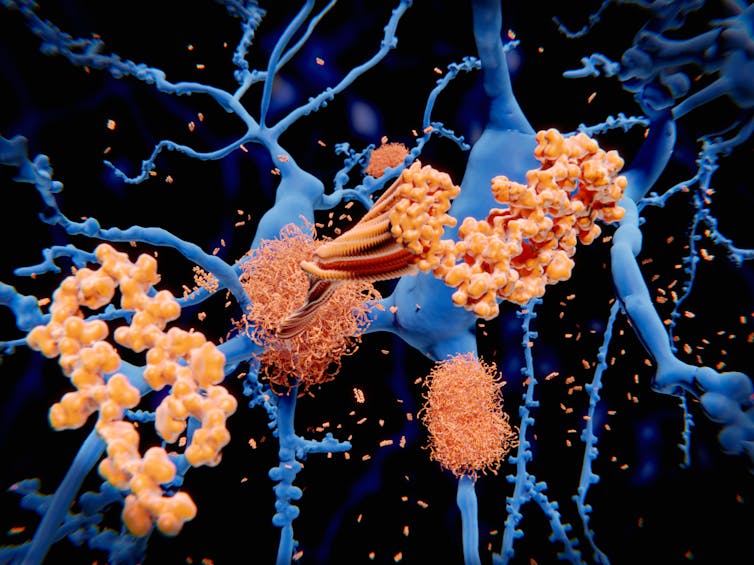Alzheimer’s disease, the most common form of dementia, has long been associated with a build-up of plaques (clumps of protein) in the brain. Scientists in Israel have shown that a type of oxygen therapy can stop new plaques forming and even remove existing plaques in mice with Alzheimer’s.
The scientists used a mouse model of Alzheimer’s disease called 5xFAD. The genetically modified mice were treated with hyperbaric oxygen therapy to see if they could halt or slow the disease progression.
Hyperbaric oxygen therapy involves breathing pure oxygen in a pressurised chamber. In the chamber, the air pressure is increased two to three times higher than normal air pressure. It is commonly used to treat decompression sickness (a condition scuba divers can suffer from), carbon monoxide poisoning, and some forms of stroke or brain injury. It works by forcing increased oxygenation of tissues with low oxygen levels (hypoxia). And it could improve blood flow to the brain to nourish brain cells that are usually deprived of blood, and hence oxygen, in Alzheimer’s disease.
The scientists, from the University of Tel Aviv, treated 15 six-month-old mice (about 30 human years) with hyperbaric oxygen therapy for an hour a day, five days a week for four weeks. The therapy not only reduced the number and size of plaques in the brains of the mice, it also slowed the formation of new plaques, compared with a control group of mice who did not receive hyperbaric oxygen therapy.
By improving blood flow to the brain, reducing plaque levels and reducing hypoxia, the mice undergoing daily oxygen therapy began to show improvements to their cognitive abilities, such as their spatial recognition memory as well as contextual memory – the ability to remember emotional, social, spatial or temporal circumstances related to an event.

Beta-amyloid plaques (orange) clumping around brain cells (blue). Science Photo Library/Alamy Stock Photo
Not just mice
The researchers then used these findings to assess the effectiveness of oxygen therapy in six people over the age of 65 with cognitive decline. They found that 60 sessions of oxygen therapy, over 90 days, increased blood flow in certain areas of the brain and significantly improved the patients’ cognitive abilities – improved memory, attention and information processing speed.
An earlier study found that oxygen therapy reduced plaques in the brain in another mouse model of Alzheimer’s disease. And, before that, my colleagues and I published a study in Scientific Reports which showed that pure oxygen at normal atmospheric pressure can increase the blood volume in the brains of six-month-old mice with Alzheimer’s disease, and this may be able to increase the clearance of plaques from the brain.
Taken together, these findings suggest that oxygen therapy may be able to reduce cognitive decline associated with ageing and dementia in both mice and people.
“I don’t think this can ‘cure’ Alzheimer’s in humans,” Professor Uri Ashery, lead author of the research, told The Times of Israel, “but it may be able to significantly slow its progression and severity.”
However, it is important to note that the Israeli study was too small to draw any firm conclusions. Also, 60 sessions of pressurised oxygen therapy lasting an hour each is simply not feasible for most people.
Hyperbaric oxygen therapy cannot yet be offered at home or in a care home, where most people with Alzheimer’s will be based. And daily visits to a hospital or clinic is not a practical thing to do for most people with the disease.
The chambers cost up to £100,000, with around an additional £1,500 on maintenance a year. And treatments cost between £40 and £250 per session. Given that there are close to a million people with dementia in the UK alone, it is clear that offering every patient hyperbaric oxygen therapy for 60 days is not currently workable or economically viable. And the results, while promising in mice, still need to be confirmed in people with Alzheimer’s in large clinical trials.
Article cited by THE CONVERSATION
